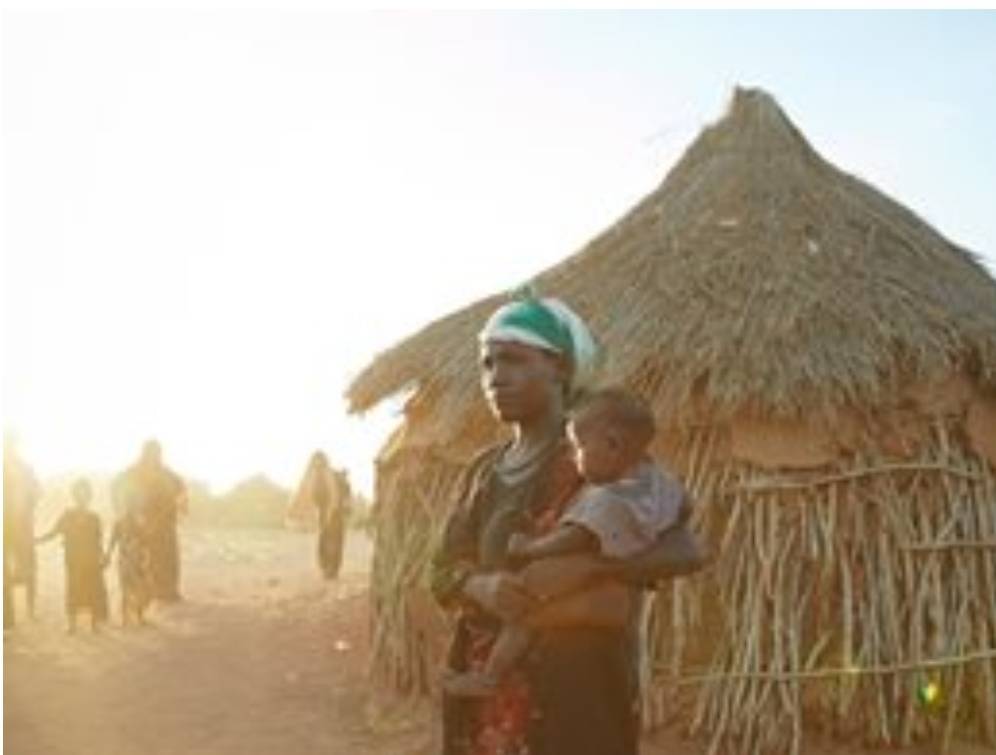ILLNESSES
Diseases such as AIDS, malaria or Ebola are the cause but also the result of poverty in Africa. Lack of education and inadequate medical care in many regions means that diseases spread faster and cannot be treated. The average life expectancy of the population is decreasing and the number of orphans is increasing. Loss of labor is particularly noticeable in agriculture and leads to reduced food production.
INADEQUATE AGRICULTURAL INFRASTRUCTURE
Roads, wells, irrigation systems, storage facilities, agricultural machinery - in many regions of Africa, agriculture lacks both infrastructure and expertise. That's why local self-help is so important in helping to fight poverty in Africa.
UNJUST TRADE STRUCTURES
Rich countries create unjust trading structures by shielding their markets with high agricultural tariffs and heavily subsidizing their own agriculture. This slows down the development of agriculture on the African continent, causing it to suffer from the outset. The governments of the U.S., the countries of Europe and other prosperous states thus contribute to poverty in Africa with their policies.
![African girl in school class]()
CHILDREN'S VILLAGES IN THE FIGHT AGAINST POVERTY IN AFRICA
The SOS Children's Villages in Africa work in 46 countries. Orphaned and abandoned children find a new home in the 147 children's villages across the continent, and we run 720 SOS programs throughout Africa. With our long-term development projects and emergency humanitarian aid, SOS Children's Villages has been fighting poverty in Africa since 1970 mostly with your donations.
There isn’t one solution that can be applied across the region, despite some of the overarching similarities in the challenges that children in Africa face. The extent to which children are empowered, the access to medical care, the local infrastructure, and the level of governmental support and stability are among the factors that determine how SOS Children’s Villages responds on the national, local, familial and individual levels.
PREVENTING CHILDREN FROM LOSING THEIR FAMILIES
The number 1 cause of child abandonment is poverty
Families across the world are more vulnerable today than ever before. Adverse circumstances like poverty, armed conflict and disease present overwhelming challenges for parents and threaten family stability.
When a family is at risk of falling apart, children are at a much greater risk of being abandoned and left vulnerable to child labor, child trafficking and other threats to their safety.
SOS Children's Villages' family strengthening programs empower families to overcome hardships. We strengthen families at risk of falling apart, giving them the support they need to grow stronger, stay together and keep their children safe. This comprehensive approach builds resilient families that go on to better their own lives and strengthen their communities.
In partnership with governments, NGOs and other relief organizations, SOS builds effective community support systems. Our short-term assistance to vulnerable families includes food, medical care and access to education. Our long-term services, which focus on making families self-reliant, include savings and loan associations, income-generating activities, childrearing classes, health education and more.
YOUTH EMPOWERMENT: BREAKING DOWN BARRIERS
SOS Children's Villages is invested in Africa for the long term, building schools in the communities where SOS villages are located, and empowering young people to learn about their rights and become their own advocates. We strive to build leaders of the future by giving youth the tools to handle adversity in all its forms, and we work not just within SOS villages but within the larger community as well.
To prepare SOS alumni for employment success, we partner with national and local associations to offer mentoring and a variety of programs that enable youth to acquire the hard and soft skills required for today’s – and tomorrow’s – job market. In some areas, entrepreneurship training might be key; in others, training in local industries might be more beneficial; in still others, computer and language skills might be the most advantageous skills to have.
EMERGENCY RESPONSE: HELPING PEOPLE WHO HAVE LOST EVERYTHING
Some of SOS Children's Villages' most urgent work in Africa is related to responding to disasters, whether human-caused or natural. Over the years, SOS has developed the know-how and the local foundations to quickly respond to large-scale humanitarian disasters.
Whether drought, conflict, epidemics or other dire situations, disasters have a disproportionate effect on children and families. We currently maintain 10 emergency response programs in Africa, helping people who have lost everything and have nowhere to go

 POVERTY IN AFRICA - READ THESE FACTS AND FIGURES
POVERTY IN AFRICA - READ THESE FACTS AND FIGURES


